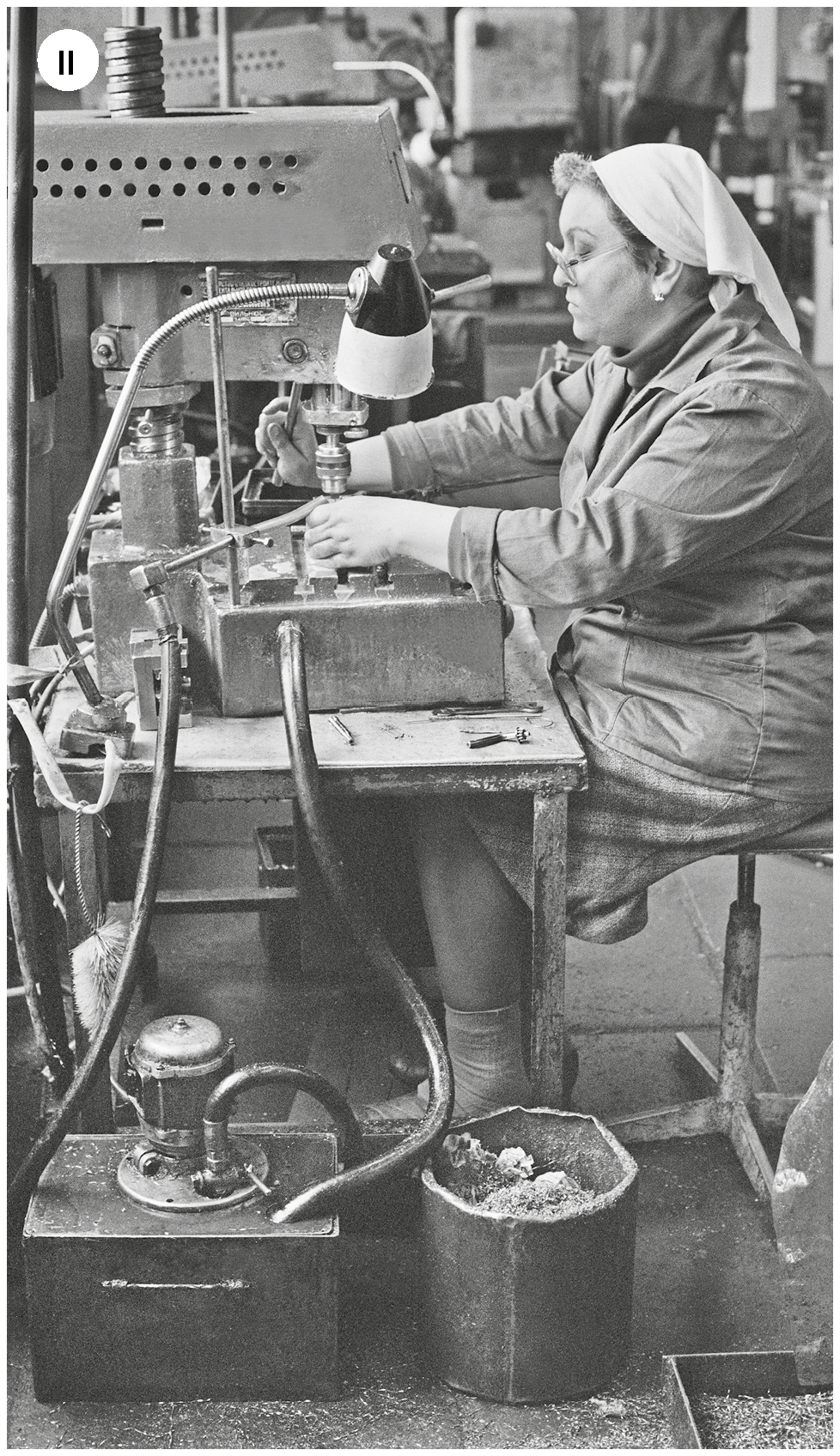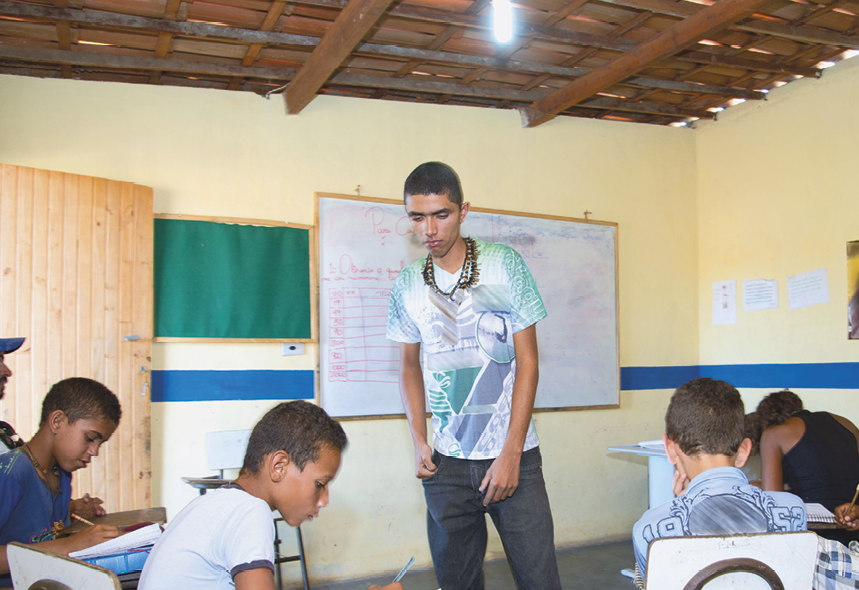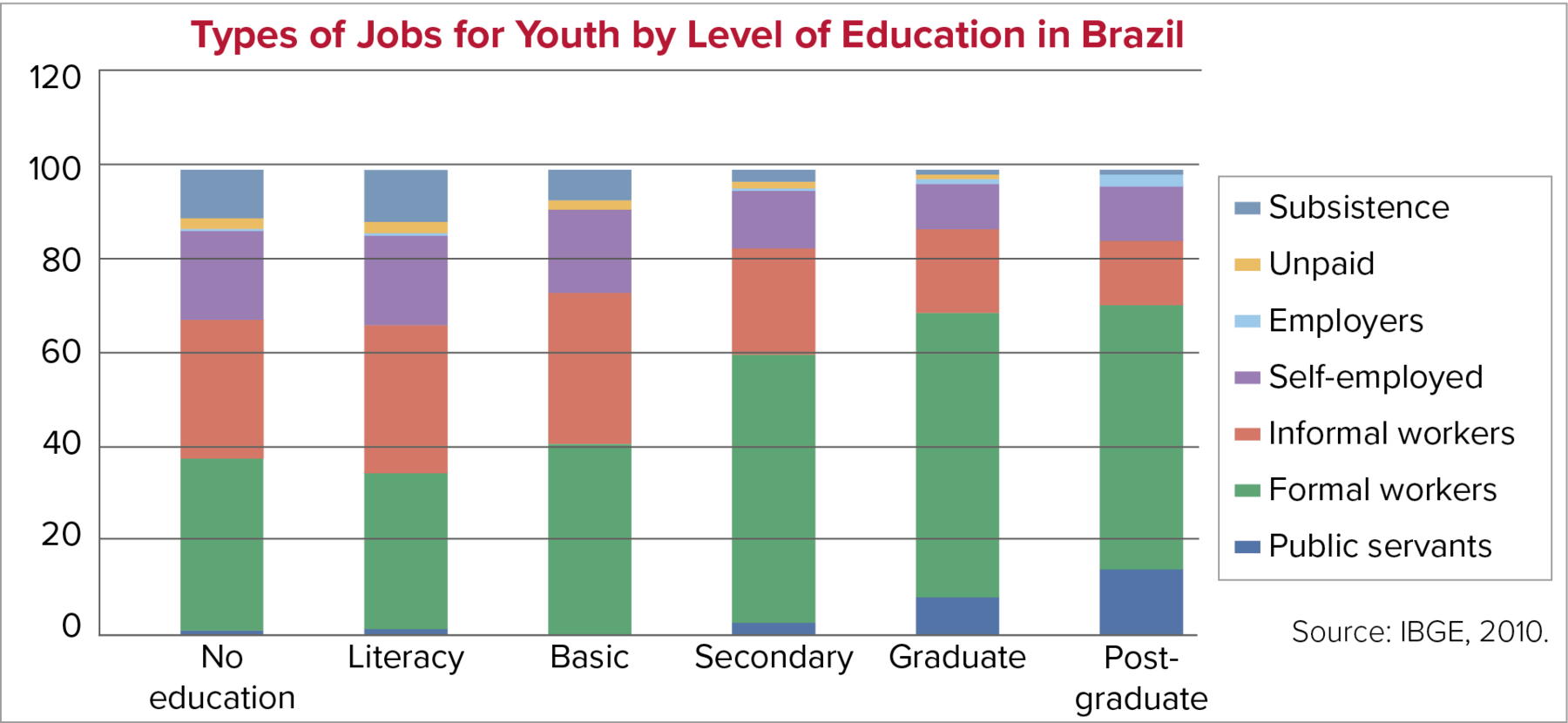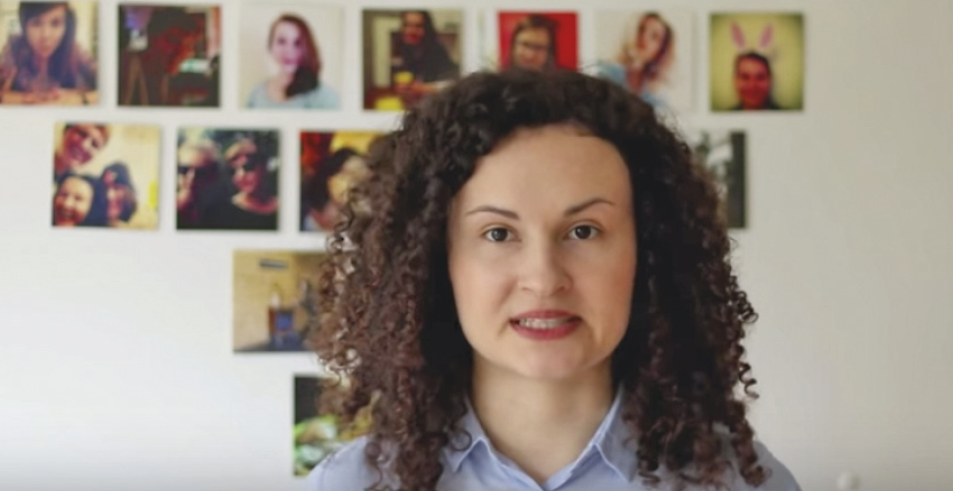
iuniti siquis dâ uôrld óv uôrk




Gêneros discursivos: entrevista jornalística e videocurrículo.
Tema: trabalho no mundo contemporâneo.
Os objetivos desta unidade são:
- familiarizar-se com os gêneros discursivos entrevista jornalística e videocurrículo;
- refletir sobre como a sociedade organiza, remunera e valoriza diferentes fórmas de trabalho.
taimi tchu finqui
Faça no caderno as questões de resposta escrita.


II.

III.

IV.

e.

2.

What do you understand by informal economy?
The informal economy is the diversified set of economic activities, enterprises, jobs and workers that are not regulated or protected by the state. The concept originally applied to self-employment in small unregistered enterprises. It has been expanded to include wage employment in unprotected jobs.
INFORMAL Economy. Disponível em: https://oeds.link/ibJC5c. Acesso em: 8 maio 2022.
- following informal occupations?
-
- .
- .
- .

3.

THE INTERNATIONAL Policy Centre for Inclusive Growth. Policy in focus: youth and employment among the BRICS. vigésima oitava edição Brasília, Distrito Federal: International Policy Centre For Inclusive Growth, 2014. página 13.
rídin
Faça no caderno as questões de resposta escrita.
tesqui uon
bifór rídin



-
-
- .
-
ríd tchu lârn

Eyes on grammar – EXAMPLE 1

Interview with an Apprentice – Tom
Youth Ambassador | 4th May 2014
This month we spoke to Tom Gardner, an apprentice at Spraylat International, one of YEUK’s brilliant “Youth Friendly” Badge holders
Tell us a little about you.
I didn’t really like school, I preferred more practical work and enjoyed doing a Public Services course at Tresham College after I’d finished school. I want to get a degree in Chemistry and I’d like to be a Royal navy reservist.
Why did you choose an apprenticeship?
I chose an apprenticeship because I wanted to do something practical, but learn at the same time. The practical work I do at Spraylat International Ltd is very unique and it is local, so easy for me to get to.
How did you find your apprenticeship, what was the process like?
I had 2 interviews, one was with my manager, Lee Kennedy, Spraylat’s Senior Development Chemist, and then the second was with Lee and Spraylat’s MD [Managing Director], Andrew Keir. I was offered the apprenticeship the same day as my first interview; I was really pleased about that.
What is your apprenticeship like? What’s a typical day, what is the qualification side of the work like?
My apprenticeship is brilliant. Every day is different here, and I really like that. You’re really kept on your toes, doing different practical experiments, product testing, writing reports and more. The qualification side of it is good; I can link it to what I’m doing practically.
Do you get much support from your employer or training provider?
I have amazing support from both. My manager and the rest of the staff are always there to help me with my work and answer any questions I might have. I have had great support from my training provider Biz Ed, the time I spend with them is really helpful because I can ask them any questions I have about my work.
Do you enjoy being an apprentice?
I love being an apprentice. It’s the best decision of my life.
What are your plans for when your apprenticeship is complete?
I’d like to do my HND [Higher Nation Diploma], then get a degree in Chemistry.
What advice would you give to someone who is thinking about starting an apprenticeship?
Do it. It’s a great experience; you learn so much, you get work experience and qualifications that you can use in future.
INTERVIEW with an apprentice – Tom. Disponível em: https://oeds.link/aw7YnZ. Acesso em: 8 maio 2022.
Did you know?
• uái í iú kêi (iúf emplóimânt iú kêi) é uma organização que apoia jovens candidatos a empregos. A iúf frêndli bédj é uma credencial da organização concedida a empresas que se comprometem a promover oportunidades e direitos para jovens trabalhadores.
constrãquitchion minins

-
- aprêntischip
- [
- [



d.

YEUK Becomes 10th Patron Of The Association Of Employment And Learning Providers. Disponível em: https://oeds.link/Almrlq. Acesso em: 10 maio 2022.
tésqui tchu
bifór rídin

1.
advice opinion about what to do, how to behave
ADVICE. In: OXFORD Advanced Learner’s Dictionary of Current English. Oxford: Oxford University Press, 1982. página 14.

-
- .

ríd tchu lârn

Eyes on grammar – egzâmpols uan en tchu

“My best advice for job seekers is…”: A roundup of advice
By Susan Ricker | June 5, 2014
CHECK OUT WHAT ADVICE OTHERS SHARED WITH US TO PASS ALONG TO JOB SEEKERS HERE ON OUR BLOG.
Finding a job is easier said than done. While you may know to submit a professional résumé, write a thoughtful cover letter and practice before an interview, sometimes you still don’t get the job.
While every job search experience is different, it’s helpful to hear from others who are in or have been in the same boat as you. Here, experts and past job seekers share some of their best advice for landing your dream role:
Practice makes perfect
“Be very careful how you answer questions in a job interview. You always want to be truthful, but it’s best to practice your answers, as most websites suggest. I failed to do this prior to my first interview, and when I was asked what job I’d done that I was most proud of, I actually answered, ‘Being a mother.’ While this is true, it was definitely not the best answer Do your homework on the companies you plan to interview with and anticipate the kinds of questions they might ask. Come up with answers that will be both honest and impressive.” – Margaret Miller, writer and editor at The Lyndon Baines Johnson Foundation
Don’t let bad news get you down
People are getting jobs every day, and companies are growing, even in a down economy. I say this as a business owner, whose biggest challenge over the past year has been finding quality help. reticências I believe that people get an idea that there are no jobs because of all the negativity they hear about the job numbers in the media, so they buy into that and give up, while others go for it and find great jobs, regardless of the economic indicators.” – Anthony Kirlew, founder and CEO of AKA Internet Marketing
Find what makes you passionate
“If you don’t focus your job search on something you are passionate about, you won’t stand out enough. Your networking, your résumé and your interviews all have to show a spark to get attention, especially in a tight economy. The good news is it’s a great time to tap into what you love and then match that to the job market. It’s possible and essential.” – Val Nelson, career and business coach
reticências
Stand out from the crowd
“Every candidate is punctual, responsible and gets on well with people. To avoid blending in with the crowd, highlight unique elements of your personal brand. For example, a candidate listed an around-the-world trip she took in college as an educational experience. When we read that, we had to hear the story, so she got an interview and eventually a job. Don’t skip or gloss over the cover letter. This is your opportunity to make a personal impression and connection. A résumé is just a list of facts about you, but the cover letter gives a hiring agent insight into your personality. We hire people, not résumés.
“Salespeople learn to translate features into benefits. When you are trying to sell yourself, you should do the same. A feature is a fact about you – experience, skills, education etc. A benefit is why we should care. – Matt Meuleners, executive partner at professional training and coaching company FOCUS Training
RICKER, S. “My best advice for job seekers is...”: A roundup of advice. CareerBuilder, 5 junho 2014. Disponível em: https://oeds.link/kM7qCh. Acesso em: 8 maio 2022.
constrãquitchion minins


-
-
- Mét
-

-
- cuéstchân ór cuéstchâns
think a lítol mór

-
- Com que idade vocês pensam que os jovens poderiam começar a trabalhar? Por quê?
- A idade que vocês responderam na questão 1a está de acordo com a lei brasileira? Pesquisem para verificar a resposta.
- Quais são as vantagens e as desvantagens de trabalhar como aprendiz?
- Profissionais qualificados e aprendizes ganham o mesmo salário? Vocês consideram isso justo? Por quê?
- Pesquisem organizações brasileiras que ajudem jovens a encontrar empregos e que ofereçam treinamento prático. Compartilhem resultados da pesquisa com os colegas.
- Quais conselhos da tésqui tchusão mais relevantes para você? Justifique sua resposta.
- Os textos da tesqui uon e tésqui tchuapresentam, em sua maioria, aspectos positivos. Quais seriam alguns aspectos negativos de um aprendiz procurar um emprego?
lissenin
Faça no caderno as questões de resposta escrita.
bifór listenin


-
- .

-
-
- tchitchers.
-

4.
líssen tchu lârn


Eyes on grammar – egzâmpol uan
Video CV - Parts um and dois
Title: My video CV // student video resume
Date: May 22, 2016
Source: Melania Smyk
MY VIDEO CV // student video résumé. 2016. P&B. Disponível em: https://oeds.link/sc8Nz8. Acesso em: 8 maio 2022.
Clique no play e acompanhe a reprodução do Áudio.
Clique no play e acompanhe a reprodução do Áudio.


constrãquitchion minins


- tí(true) ór éf(false)






“Hi! My name is Melania Smyk and this is my video CV. I was born and raised in Poland.”
b.
“I graduated from I.B., which stands for International Baccalaureate, in a Polish high school and currently I’m studying International Business and Languages in Amsterdam, the Netherlands.”
c.
“I’m an organized and detail-oriented person. I have excellent writing skills in English, so I can safely say I write really good business reports, especially considering the fact that I really enjoy doing research. I’m also very persistent and motivated when trying to achieve a goal I care about.”
d.
“An example of this could be me moving to the Netherlands. Well, it was not easy, there were some obstacles on the way, such as financial problems and lack of support from people that were supposed to support me, but in the end, I decided to not let go of my dream, so I got a job
e.
“I worked hard during the summer, I saved some money and I made it happen.”
f.
“My colleagues told me that they feel they can depend on me at work and that I’m very professional, but also that I know when I can relax and just be more fun. I’m also very analytical and I appreciate a positive, transparent atmosphere in a team. I try to understand others’ perspective and to communicate clearly and to basically be honest, because I think that’s the basis for good and efficient work.”
think a lítol mór

-
- Na opinião de vocês, por que Melania produziu o videocurrículo em inglês, se ela é polonesa e vive na Holanda? Que emprego ela deve estar procurando?
- Vocês acham que videocurrículo é uma maneira eficaz de convencer um empregador a contratar alguém? Expliquem sua resposta.
- Para que tipo de emprego, na opinião de vocês, brasileiros poderiam se candidatar usando um videocurrículo em inglês?
- Quais qualidades e habilidades vocês colocariam em seus videocurrículos?
lenguagi in équitchon
Faça no caderno as questões de resposta escrita.

1.
“My manager and the rest of the staff are always there to help me with my work and answer any questions I might have.” (página 123)
“Finding a job is easier said than done. While you may know to submit a professional résumé, write a thoughtful cover letter and practice before an interview, sometimes you still don’t get the job.” (página 126)
“Salespeople learn to translate features into benefits. When you are trying to sell yourself, you should do the same. A feature is a fact about you – experience, skills, education, etc. A benefit is why we should care.(página 127)
Versão adaptada acessível
Atividade 1, item a.
Find in the expressions "might have", "may know", "should do" and "should care"
- the main verbs.
- the auxiliary verbs.
c. previous excerpts .

What would you say to anyone at secondary school that espaço para resposta (might/should) think they’re too young to start a business or too young to start a project?
60 SECOND Interview: Inventor. Disponível em: https://oeds.link/nZQ9RW. Acesso em: 8 maio 2022.
b.
You espaço para resposta (should/may) not feel so passionate about your subject that you create a business out of it, not vice-versa.
BEING Your Own Boss: What Does It Take To Work For Yourself. Disponível em: https://oeds.link/okB5u5. Acesso em: 8 maio 2022.
c.
I am normally based at The Mansion, which is based in a historic building in Roundhay Park, in Leeds. But the company also caters for offsite events like weddings, so some weekends I espaço para resposta (may/should) have to travel with the catering team to other venues like castles!
60 SECOND Interview: Chef. Disponível em: https://oeds.link/lvv0m7. Acesso em: 8 maio 2022.
d.
— What’s the best thing about your job?
— Working with the pupils, they all are amazing, with excellent ideas and insight into life. They teach me about K-Pop and why I espaço para resposta (may not/shouldn’t) support Manchester United.
60 SECOND Interview: Geography Teacher. Disponível em: https://oeds.link/MkV01Q. Acesso em: 8 maio 2022.


3. êndmaitchi

4.
Versão adaptada acessível
Atividade 4.
Read the excerpt from the interview below and identify the meaning of the connector "while" in the two occurrences.
“Finding a job is easier said than done. While you may know to submit a professional résumé, write a thoughtful cover letter and practice before an interview, sometimes you still don’t get the job.
While every job search experience is different, it’s helpful to hear from others who are in or have been in the same boat as you.” (página 126)
- cóntrést.
b. .

5.
I always knew that I wanted to pursue an apprenticeship, although at school I was more interested in the aeronautical industry. While I had several interviews with companies such as Monarch and British Airways, they didn’t result in a job. What I took away from the experience, however, was that it was positive to get down to the final interviews – some of the candidates were graduates and several years older than me.
60 SECOND Interview: Apprentice Car Mechanic. Disponível em: https://oeds.link/bHo75r. Acesso em: 8 maio 2022.
ispíquin
Faça no caderno as questões de resposta escrita.
rit de rroudi
You are going to produce a video CV. Remember you have already seen an example of video CV in Listening.
1.
For the oral production
What is the discursive genre? Video CV.
What is the theme? Your education, experience and qualities.
What is the objective? To convince an employer to hire you as an apprentice.
At whom is it aimed? Potential employers.
How and where is it going to be presented? On the school site, on a blog or during classes.
Who is going to participate? All students in class, individually.
túlbóks


-
- ín
-
istép béqui


2.
piti istopi
Faça no caderno as questões de resposta escrita.

thinkirôver
Faça no caderno as questões de resposta escrita.

-
- O que foi fácil para você fazer e compreender? E o que foi difícil?
- Quais conhecimentos novos você adquiriu? O que fez você pensar com base em um novo ponto de vista?
- O que você achou mais interessante nas entrevistas?
- O que você aprendeu sobre videocurrículos?
áison grémer
Leia os exemplos extraídos dos textos dessa unidade, bem como as palavras e expressões destacadas. Preste atenção às observações que as seguem.
Versão adaptada acessível
Eyes on Grammar.
Leia os exemplos extraídos dos textos desta unidade. Preste atenção às palavras e expressões que serão explicadas pelas observações que as seguem.
egzâmpol uan
Versão adaptada acessível
Example 1 – may/might
“While you may know to submit a professional résumé, write a thoughtful cover letter and practice before an interview, sometimes you still don’t get the job.
Do your homework on the companies you plan to interview with and anticipate the kinds of questions they might ask.”
(página 126)
“Although I may come off as a serious person, that’s only because I’m serious about what I do
(página 130; Video cê vê - Part dois)
|
Affirmative / Afirmativo |
Negative / Negativo |
|---|---|
|
SUBJECT + MIGHT + VERB |
SUBJECT + MIGHT + NOT + VERB |
- maitchi + verbo indica que algo pode acontecer. Geralmente, essa probabilidade é pequena, ou seja, é possível, mas improvável.
- Em uma pergunta (forma interrogativa), maitchi é usado para pedir permissão de maneira bastante formal.
|
Affirmative / Afirmativo |
Negative / Negativo |
|---|---|
|
SUBJECT + MAY + VERB |
SUBJECT + MAY + NOT + VERB |
- mei + verbo também pode ser usado para expressar probabilidade. Mesmo quando a probabilidade é mais alta, o significado é semelhante a maitchi + verbo.
- Também é usado para autorizar (na fórma afirmativa) ou negar (na fórma negativa). Esse significado é semelhante a ken + verbo, que é mais comum e menos formal.
- Em uma pergunta (fórma interrogativa), mei é usado para pedir permissão.
egzâmpol tchu
Versão adaptada acessível
Example 2 – should
“When you are trying to sell yourself, you should do the same. A benefit is why we should care.”
(página 127)
|
Affirmative / Afirmativo |
Negative / Negativo |
Interrogative / Interrogativo |
|---|---|---|
|
SUBJECT + SHOULD + VERB |
SUBJECT+ SHOULD + NOT+ VERB |
SHOULD + SUBJECT+ VERB |
- xuldi + verbo é usado para dar conselhos ou sugestões. xuldi expressa algo desejável (na fórma afirmativa) ou algo indesejável (na fórma negativa).
- xuldi também pode ser usado para pedir conselhos ou sugestões: